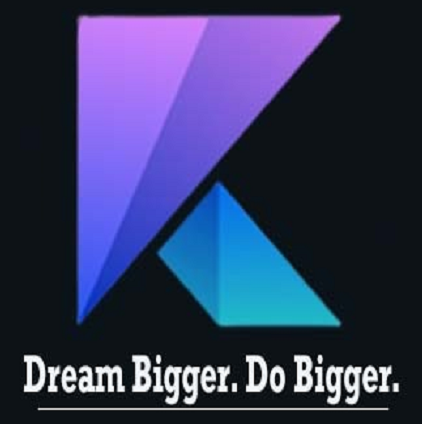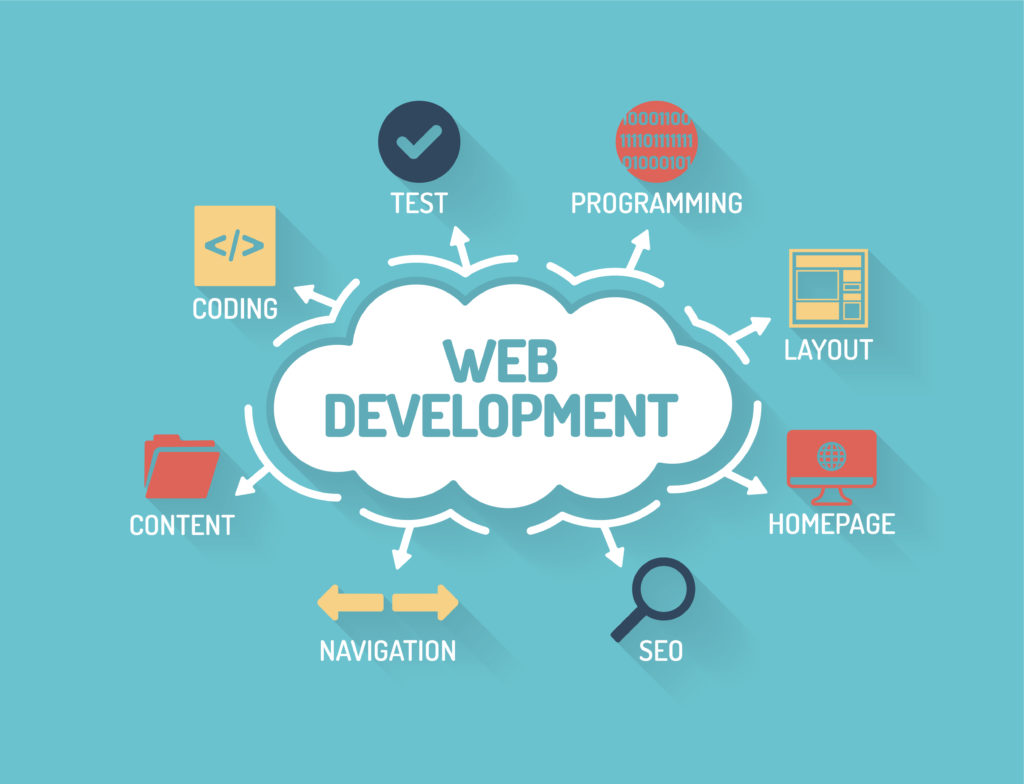The Future of Web Development
The Future of Web Development in 2023 lets discuss
- AI & ML technologies would continue to gain traction in the web development business, enabling the creation of smarter apps and websites that really can adapt and learn according to user behaviour.
- There will be a rise in the use of progressive web apps (PWA): A progressive web app (PWA) combines the convenience of a website with the functionality of a mobile app. In the future years, PWA technology use is predicted to increase at a rapid rate.
- In the future, VSO (Voice Search Optimization) will be crucial: Since more and more people are using voice search, VSO will be essential for companies to achieve a high placement in voice search results. To increase a site’s discoverability and user engagement, web developers will need to make it compatible with voice search.
- The popularity of both AR and VR will only increase: The use of augmented and virtual reality (AR/VR) in web development to improve the user experience is already commonplace and will become increasingly more common in the years to come. Web developers will need to stay abreast of these developments if they want to provide users with more compelling and lifelike online experiences.
- With the proliferation of cyberattacks, developers will increasingly priorities tightening up website security. In addition to the increasing prevalence of HTTPS, additional security measures like two-factor authentication, firewalls, and secure coding techniques will be adopted by an increasing number of websites.
- The trend towards low-code or no-code development, which enables organisations to build websites and applications without the assistance of highly qualified developers, will continue to expand. The development time and cost will both improve as a result of this.
The use of Web Assembly will only increase: Web Assembly paves the way for languages other than JavaScript to be used to create web applications. Since this technology makes it possible to create more rapid and effective online apps, it is likely to grow in popularity over the next few years.
Web Components are becoming more popular because they enable programmers to make web application modules that may be reused in many contexts.
To get your website developed or any other services from us click : Get Quote
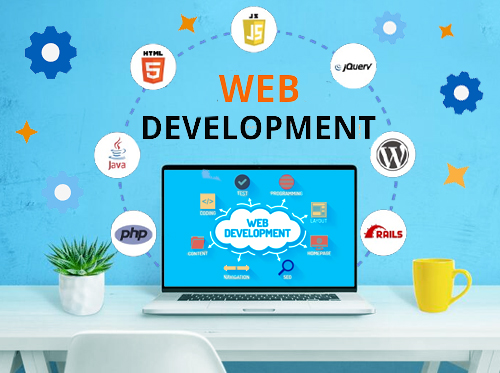
This movement will increase, simplifying the process of creating complicated applications that make use of reusable parts.
As a whole, these tendencies point to the rapid evolution of web development in the coming years, driven by technological advances and shifts in user behaviour. To maintain their relevance in the business and provide users with high-quality web experiences, developers will need to keep up with current trends.
It is crucial to choose the right web development company for your website development as it has a significant impact on the success of your online presence. A professional and experienced web development company like Karna Groups LLC can help you create a high-quality website that meets your business needs, attracts and retains visitors, and generates leads and sales, we are one of the few top web development companies in Dallas.
Read More: Top Digital Marketing Company in Dallas: Discover Our Services in 2023
Use of chatbots and other conversational interfaces rises as they improve in sophistication and find widespread use across many sectors. Chatbots are becoming increasingly used in web development, allowing for instantaneous help and tailored experiences for consumers.
The importance of making websites and applications accessible to persons with disabilities, such as the visually impaired, is growing. Accessibility elements like screen readers, alternative text, and keyboard navigation need to be implemented.
The importance of sustainable web design, which seeks to lessen the ecological footprint of online content and software, is growing. This includes decreasing data use, cutting down on energy costs, and improving website performance.
There has been a rise in the popularity of serverless architecture, which eliminates the need for costly and complex infrastructure in the creation and operation of software. As a result, development times, prices, and scalability may improve.
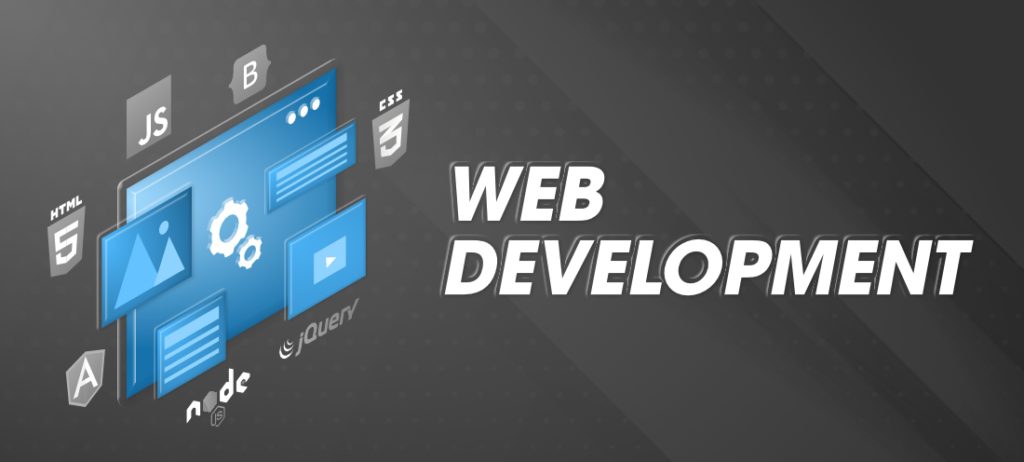
Increased implementation of motion design, which seeks to improve the user experience through the deployment of animations, transitions, and other visual effects. As more and more apps and websites focus on creating interactive experiences for their customers, this pattern is likely to continue to increase.
An increased emphasis on data privacy and protection means that web developers must guarantee that their products adhere to legislation like the General Data Protection Regulation (GDPR) and the California Consumer Privacy Act (CCPA). This entails include elements like biscuit alerts, data encryption, and methods for gaining user approval.
There has been a rise in the popularity of “headless CMS,” a type of content management system that provides developers with greater freedom when designing user interfaces. This pattern will likely persist as more companies search for methods to provide customers with tailored, up-to-date information.
- E-commerce and other forms of secure online payment are two sectors where blockchain technology is slowly but steadily gaining ground in web development. With blockchain technology, programmers can build decentralized applications (dApps) which aren’t managed by a single entity.
- Web apps that only load a single HTML page and change it in real time in response to user input are known as single-page applications (SPAs). Because the page is not reloaded every time a user takes an action, SPAs deliver a fluid and responsive experience.
- Accessibility on the Web: As more and more people use the internet, it is more important that websites and web applications be accessible to people with impairments. Web developers are responsible for making their sites and apps accessible to all users by adhering to web accessibility requirements such as the Web Content Accessibility Guidelines (WCAG).
- Emerging low-code and no-code development frameworks make it possible for anyone, not just programmers, to build online apps. Web creation is made easier with the help of these platforms, which offer features like customizable templates, drag-and-drop editors, and pre-made integrations.
- As the number of people using mobile devices to access the internet grows, responsive design has gone from being a nice-to-have to an absolute requirement for any website. It is the responsibility of web developers to guarantee that their sites and applications function properly across all platforms.
- The term “Internet of Things” (IoT) refers to a network of electronic gadgets, automobiles, and household appliances that are equipped with sensors, software, and network connectivity to facilitate data sharing and automated processes. Web developers now have the tools they need to build IoT-enabled applications that can communicate with IoT gadgets for things like remote control, automation, and data analysis.
- Artificial intelligence and natural language processing fuel chatbots, which are virtual assistants that can carry on conversations with users via text or voice commands. Web developers now have another tool at their disposal thanks to chatbots: the ability to build online apps that offer fast help, customized advice, and streamlined processes for businesses and their clients.
- Web components are a set of standard APIs that enable programmers to build online applications with reusable and modular components. Web components allow developers to design and reuse their own unique parts, layouts, and styles across different websites and applications.
- Quantum computing is a novel type of computer that can do sophisticated calculations and data analysis with the help of quantum bits, also known as qubits. Web developers can use quantum computing to build apps that do complicated tasks like machine learning, cryptography, and optimization.
- The fifth-generation wireless network, or 5G, is an emerging standard that will significantly improve upon the speeds, latency, and bandwidth of existing mobile networks. Thanks to 5G, mobile users will be able to access websites that provide high-resolution video and audio, instant messaging, and fully immersive environments.
- Blockchain technology is a distributed ledger that can be used to create unchangeable data, transactions, and programs that are invulnerable to hacking. Web developers can use blockchain technology to build apps that provide safe and transparent file sharing, digital identities, and smart contracts.
- Designing interactive and visually appealing user interfaces with animations, transitions, and other visual effects is called “motion design,” a relatively new discipline within web development. Web developers may utilize motion design to make online apps that are easy to use and fun to interact with, making it a good fit for e-commerce, gaming, and multimedia.
- Anyone with sensory or motor impairments, such as those who are blind or deaf, may have trouble using certain features of the Internet, hence it is important to practice web accessibility while creating apps for the online. Developers of web apps can improve the user experience and engagement for all visitors by adhering to web accessibility standards.
- Pattern recognition, data analysis, and optimization are just some of the complicated challenges that can be tackled with the help of quantum computing and machine learning, a relatively new subject. Applications in the fields of finance, healthcare, and logistics can all benefit from the accurate predictions and suggestions made by web apps built using quantum machine learning.
- Protecting web applications from cyber dangers including hacking, data breaches, and malware is an essential part of web development known as “cybersecurity.” Cybersecurity allows web developers to build apps that protect users’ information while it’s in transit, at rest, and being processed.
- Progressive Web Applications (PWA) are web applications that mimic the functionality of native apps while retaining the advantages of being hosted on the web. PWAs have the speed, reliability, and engagement of native apps, but can be accessible through a web browser. Offline functionality, push notifications, and other capabilities that were previously exclusive to native apps are now available to web applications thanks to progressive web apps.
- Artificial intelligence (AI) is a subfield of computer science concerned with the development of computational systems capable of performing activities normally associated with human intellect, such as language comprehension, rational decision making, and perceptual understanding. E-commerce, healthcare, and customer service are just some of the industries that can benefit from the tailored suggestions, natural language processing, and chatbots made possible by artificial intelligence (AI) in web development.
- WebAssembly (WASM) is a low-level virtual machine that allows high-performance, low-level programming languages like C++, Rust, and Go to execute in web browsers at near-native speeds. Games, data analysis, and simulations are just some of the uses for the complicated computations and data processing capabilities made possible by WASM for web developers.
- Web design trends are the most up-to-date practices in website development for achieving aesthetic excellence, user engagement, and ease of use. Minimalism, dark mode, 3D graphics, and micro-animations are some of the current web design trends that work well with e-commerce, entertainment, and social media.
- For web developers, server management and infrastructure concerns are irrelevant thanks to serverless architecture, a cloud computing concept. IoT, e-commerce, and mobile gaming are just a few examples of the types of applications that might benefit from serverless architecture’s scalability, efficiency, and low cost.
- The Internet of Things (IoT) is a system of physical items, sensors, and other computing devices that can share information and coordinate their actions using the internet. Home automation, energy management, and traffic control are just some of the many uses for IoT, which allows web developers to link and operate smart devices like appliances, wearables, and even entire smart cities.
- Voice user interface (VUI) refers to a new method of interacting with websites and programs through the use of one’s voice and other natural language processing techniques. It is well suited for usage with virtual assistants, smart speakers, and other voice-controlled devices because VUI allows web developers to construct web apps that deliver hands-free and intuitive user experiences.
- Using mobile devices like smartphones, tablets, and smart glasses, augmented reality (AR) superimposes computer-generated imagery and data onto a user’s view of the physical world. Applications in e-commerce, education, and entertainment can all benefit from the immersive and engaging experiences that can be built into a website using augmented reality.
- Virtual reality (VR) is a technology that creates a simulated, three-dimensional environment in which the user may move around and interact with objects and other people using special hardware. Applications such as gaming, education, and training can all benefit from the immersive and engaging experiences that VR enables web developers to create.
- Web applications developed using the cross-platform development methodology can be accessed and used across a wide range of platforms, including but not limited to Windows, macOS, iOS, and Android. Web developers can employ cross-platform development to build e-commerce, gaming, and productivity apps that offer consistent and seamless user experiences across all platforms.
- Blockchain is a distributed digital ledger system that facilitates trustworthy and transparent transactions between two parties with no middlemen required. Applications like financial services, supply chain management, and digital identities can all benefit from blockchain since it allows web developers to build apps with safe and decentralized data storage, authentication, and smart contracts.
- The fifth generation of wireless technology, abbreviated as “5G,” improves upon its predecessors in several key areas, including transmission speed, latency, and bandwidth. Applications like live streaming, virtual reality, and the Internet of Things can benefit from the ultra-fast and dependable connectivity made possible by 5G web applications.
- Chatbots are conversational software applications that use AI to mimic human speech in order to deliver automated services in the areas of customer care, sales, and marketing. E-commerce, healthcare, and banking are just few of the industries that can benefit from chatbots because of the individualized and effective connections they enable.
- As cyberattacks and data breaches become more regular, users and creators of websites are becoming increasingly concerned about cyber security. Application domains like banking, healthcare, and government can all benefit from the added layer of security that cybersecurity for the web provides.
- The term “accessibility” refers to the process of making a website or web application useful and navigable by people of all abilities and disabilities. Applications in the fields of education, government, and social media can all benefit from the increased accessibility made possible by accessibility standards for the web.
- Progressive Web Applications (PWA) are websites that function similarly to native apps in terms of user experience, including offline access, push notifications, and app launchers. PWA allows developers to make websites that run smoothly and keep users interested, making it ideal for e-commerce, news, and social media sites.
- The use of motion and animation to improve the user interface and overall user experience is known as “motion UI,” a design trend in web development. Web developers may use Motion UI to build visually stunning and interactive applications for the likes of gaming, entertainment, and advertising.
- The term “single-page application” (SPA) refers to web applications that don’t require page refreshes because all material is loaded dynamically on a single page. Web developers may take advantage of SPA to build social media, productivity, and gaming applications that are lightning fast, responsive, and seamless.
- In order to provide better freedom and adaptability, “headless CMS” divides the content management and distribution processes into two distinct layers. Web developers can use Headless CMS to build e-commerce, media, and educational apps with tailored and dynamic content distribution.
- Microservices are a method of developing software in which large monolithic programs are split up into multiple smaller services that are still able to share data and work together. With Microservices, web developers may build scalable, flexible, and robust web applications, making them suited for e-commerce, banking, and healthcare.
- To run high-performance, CPU-intensive apps in browsers, developers can take advantage of WebAssembly, a low-level bytecode format. WebAssembly allows web developers to make online apps that run nearly as fast as native apps, making it useful for games, VR/AR, and scientific simulations.
- The term “Web Components” refers to a set of specifications for creating user interface elements that are both modular and reusable across other websites. Web Components allow developers to build highly flexible and low-maintenance websites, making them ideal for e-commerce, educational, and social networking platforms.
- Natural Language Processing (NLP) is a subfield of AI concerned with the interpretation and manipulation of human language data, including written and spoken language. Applications like customer care, chatbots, and personal assistants can all benefit from NLP-enabled web development because of the intelligent and conversational interactions they enable.
- Machine learning (ML) is a subfield of AI that uses mathematical algorithms and statistical models to help computers draw inferences and make decisions based on information they have been fed. Applications in e-commerce, advertising, and healthcare are just a few that can benefit from the tailored and predictive user experiences that ML enables web developers to implement.
- Cloud computing is a method of offering computer resources like data storage, computation, and program execution over the internet. Financial, governmental, and media applications are just some of the many that can benefit from Cloud Computing’s scalability, low overhead, and global accessibility.
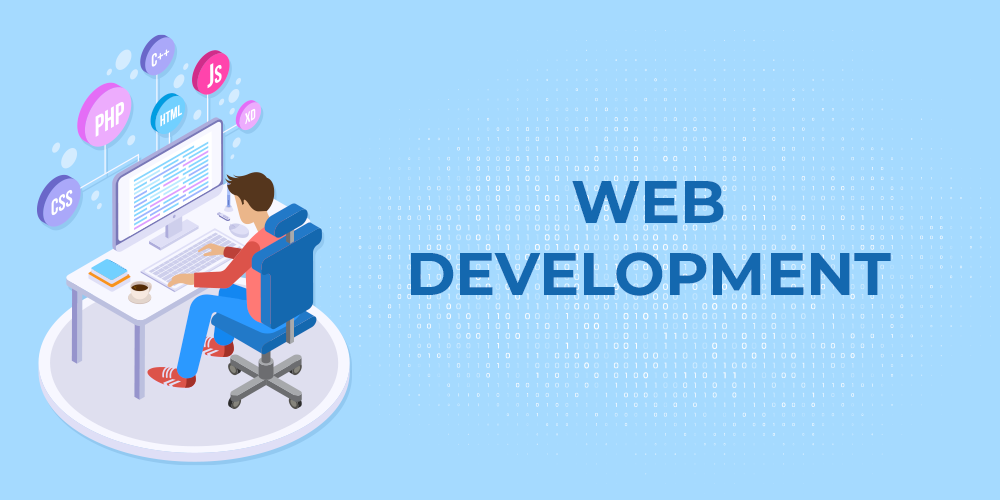
We at Karna Groups put all the new technologies, implement the latest trends and tools to make your website development process future ready and secured, our team is capable to achieve the desired results in our committed timeline, So we are having over 99% client satisfaction rate from last 6 years. We are one of the few top web development companies in Dallas who has full fledged development team to cater any kind of development needs, from simple website to full fledged CRM and softwares, we have done it all.
To get your website developed or any other services from us click : Get Quote
